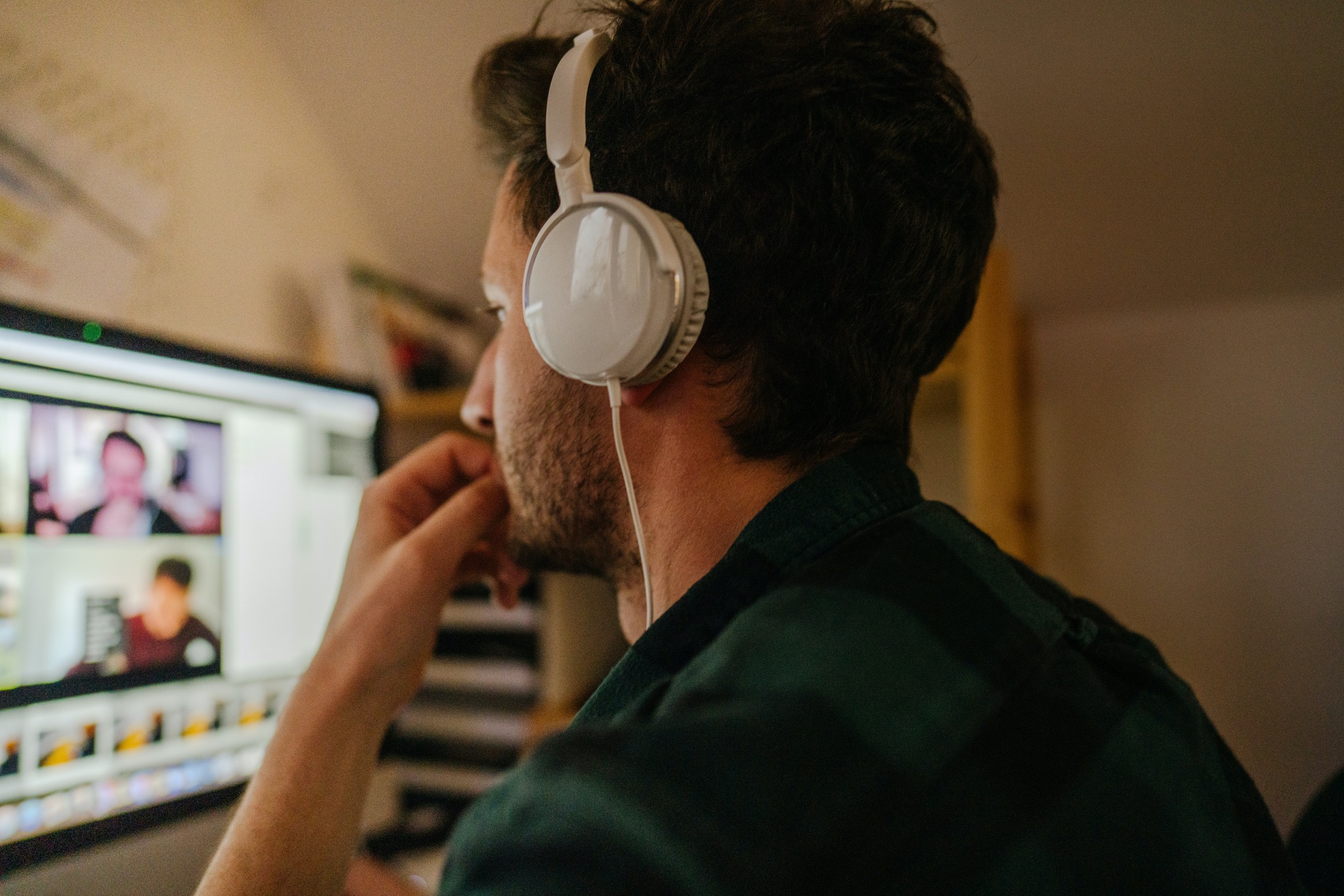Human Connection in the Age of Remote Work – Why Connection Matters and How to Nourish It With Digital Tools

Some years ago, I held a job interview over video with one of our current Performance Coaches. In the middle of the call, the aspiring Hintsa Coach’s young son popped into the screen, and his father asked me to give him two minutes. He then turned to his son, listened, and instructed him with a calm and caring voice to continue playing in his room, reassuring him he would be there shortly. We had just talked about his values, and now I saw him enact those in real life, portraying true integrity. I knew this was a person I could trust. Hintsa’s long experience with remote tools shows us that creating human connection remotely is different, but by no means worse. As long as you do it right.
At Hintsa Performance, we started using video tools in our coaching and internal interactions in 2015, and since then we have come to understand the limitations of remote tools and how to mitigate the downsides, but we’ve also come to appreciate the upsides. On video we can see people in their home environments, surrounded by objects and people they care about, which reveals much more than the typical controlled office setting. This helps build relatedness, one of the three most basic human psychological needs as described by Ryan & Deci in their widely accepted theory on human motivation.
So how can we create human connection remotely? Here are some learnings from literature and our experience after 5 years of remote performance coaching on creating and maintaining human connection in an age when remote is the new normal.
Connect with yourself first
Connecting with others starts from connection with yourself – this applies to face-to-face and online interactions alike. Have you had enough time with and for yourself? This is especially important in times of uncertainty and stress. Under stress your cortisol levels are elevated and your vigilance towards threats around you can be overemphasized. Further, cortisol can cause a shift from reflective thinking to more intuitive information processing. As Nobel laureate Daniel Kahnemann has shown, our intuition is highly biased, and so we need to manage our stress and connect with ourselves if we want open, creative and productive interactions with others.
How to do that? Nature seems to be one of the best ways to decrease stress, restore our ability to interact reflexively and mindfully, and boost our work performance. Also, diaphragmatic breathing can be effective in reducing cortisol levels and restoring attention. For some, COVID-19 has brought about more pressure as many parents are working in dual roles as teachers and employees. Practicing “positive selfishness” as our founder Dr Aki Hintsa used to say, is the antecedent of true connection with others. Nobody else can take care of your needs besides you. In fact, the best sports coaches in the world agree that taking care of themselves first allows them to remain energetic and build and maintain good relationships with both their families and their athletes.
So think about this: What do you really need? How can you fulfill those needs? Filling up your own energy reserves is critical for your relationships. If you need some help along the way, try our valued-living questionnaire or our energy pyramid tool.
Become a better listener and communicator
Communication is a skill set we can all learn and get better at. Hintsa’s Performance Coaches use motivational interviewing (MI) as a key method in interactions with clients. MI is an evidence-based method that can increase your ability to communicate effectively, while supporting and respecting the autonomy of the other person. One of the founders of MI summarised the method as “practicing kindness with skill”. Furthermore, reflective listening is one of the most important components of MI, as we discovered in an internal coach training study. Reflective listening is a method in which the listener aims to non-judgmentally understand what the other person is saying and reflect back his/her interpretation of what has been said. This encourages reflection, discussion and more open and productive collaboration.
A very common roadblock that prevents good listening is “the righting reflex”: a tendency to provide solutions rather than guide the other to find solutions. Coaches, consultants and leaders easily fall into this trap. After all, it can feel easier to help by providing answers and solving problems. Yet, the reason of our professional existence is to act as catalysts in fulfilling the true potential of our clients and employees. If you are in one of these roles, think twice next time when you want to give advice – the situation may actually call for more listening rather than more answers. If you want to learn more, I recommend this summary of motivational interviewing.
Optimise your use of remote working tools
Before we introduced video conferencing methods to Hintsa coaching, there were plenty of reservations. Interestingly, mainly from coaches, less so from clients. Can we really connect with our clients remotely? Can remote coaching be efficient? It turns that it can. We conducted an internal study a few years back where video methods were used to train our Performance Coaches. The feedback was very positive. For example, one part of the training was a 3-hour life narrative interview, conducted one-on-one over video. The training got very good feedback (6 out of 7 on average), in line with in-person trainings. The interviewer got special credit, his performance was rated 6,6 out of 7 on average for his ability to create a safe and stimulating session.
How can you do that? Here are some learnings from our internal studies and our empirical experience at Hintsa:
- Tools: Make sure you know your video conferencing tool and can use all needed functions fluently, e.g. sharing of your screen? Do a dry run if you’re unsure.
- Network: Make sure your internet bandwidth is up to the task. Networks are now very loaded as the whole world is streaming or video conferencing, so you may need to boost your bandwidth to ensure fluent discussion.
- Video on: Even if you can’t or don’t want to keep your video on the entire time, make it a rule to have videos on for the first minutes to say hello. A picture, after all, says more than a thousand words.
- Eye contact: Eye contact can make all the difference in creating human connection. Try looking into the camera, not the screen. Move the other person’s video as close as possible to the camera on the top of your screen so you can watch the person’s body language whilst also looking into the camera.
- Type gently: Be mindful of typing notes on your laptop – it will be heard, and if you type loudly when the other person is reflecting on something important it may really hamper the connection between you two.
- No notifications: Any and all audio alerts will eat your attention and the attention of others in the meeting, so turn off email, Slack and WhatsApp pings.
- Be yourself: Don’t stress about your personal life joining your video conferences. It is okay if your kid pops into the screen – it makes you a human and can help others connect better with you.
- Let others be themselves: If you are an extreme extrovert, it is likely you want to showcase your entire home and invite your spouse too. But not everyone feels that way. Allow the other person to keep his/her privacy if they so desire.
Invest in your connections
It turns out genuine connection can be created remotely if we are in tune with ourselves, can really listen, and use our video conferencing tools appropriately. And if we are able to create and maintain good connections with ourselves and with another, we can keep living a good life and keep performing on a high level.
Here, a final encouragement about the importance of connections from the top of the sports coaching world, from coach Smith who coached the highly successful New Zealand Rugby team: “A lot of your performance, I think, depends on the connections you have with people around you… connections with the game, but also connection with the fans of the game, connection with your family, and with each other. That’s where a lot of your resilience comes from.”


